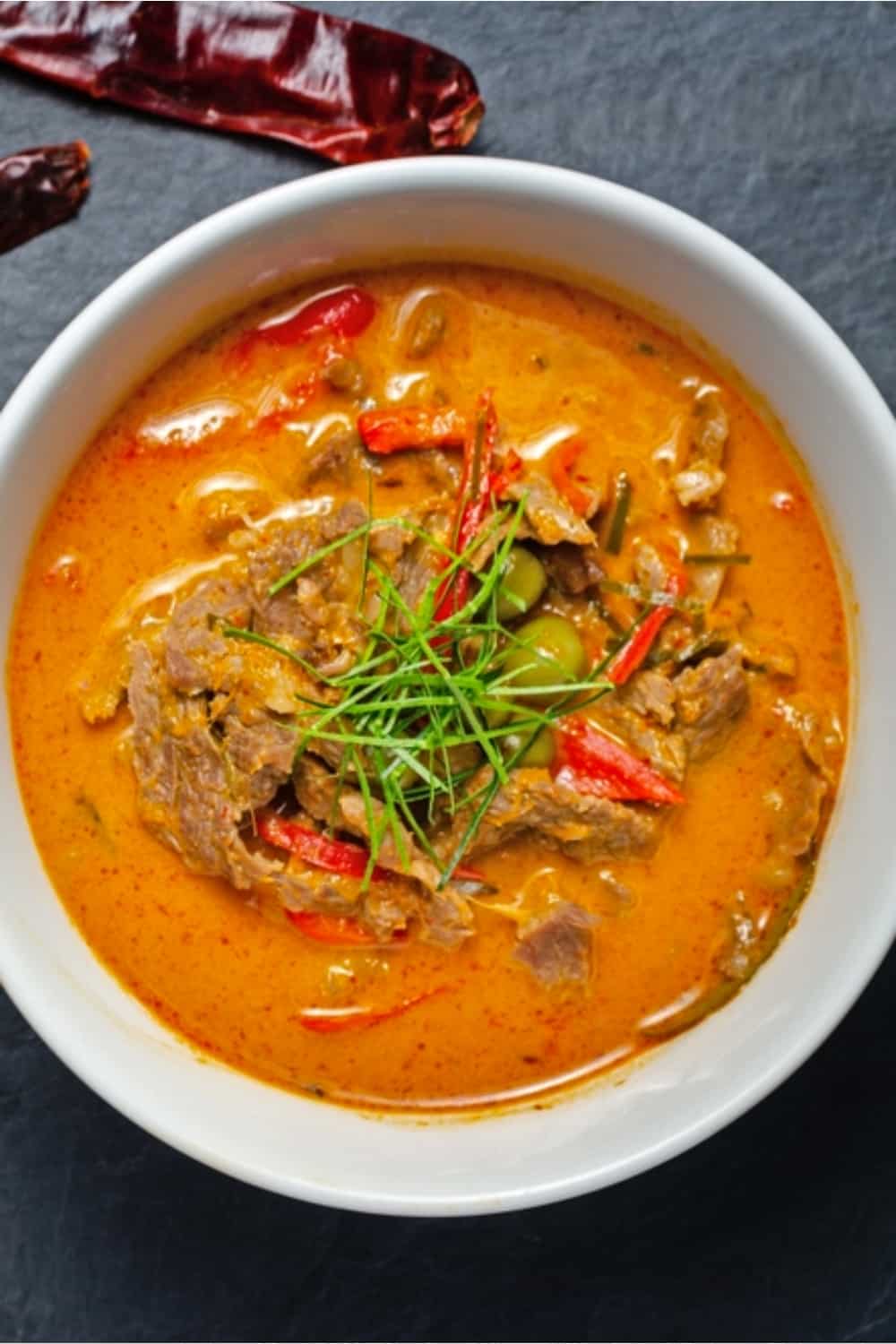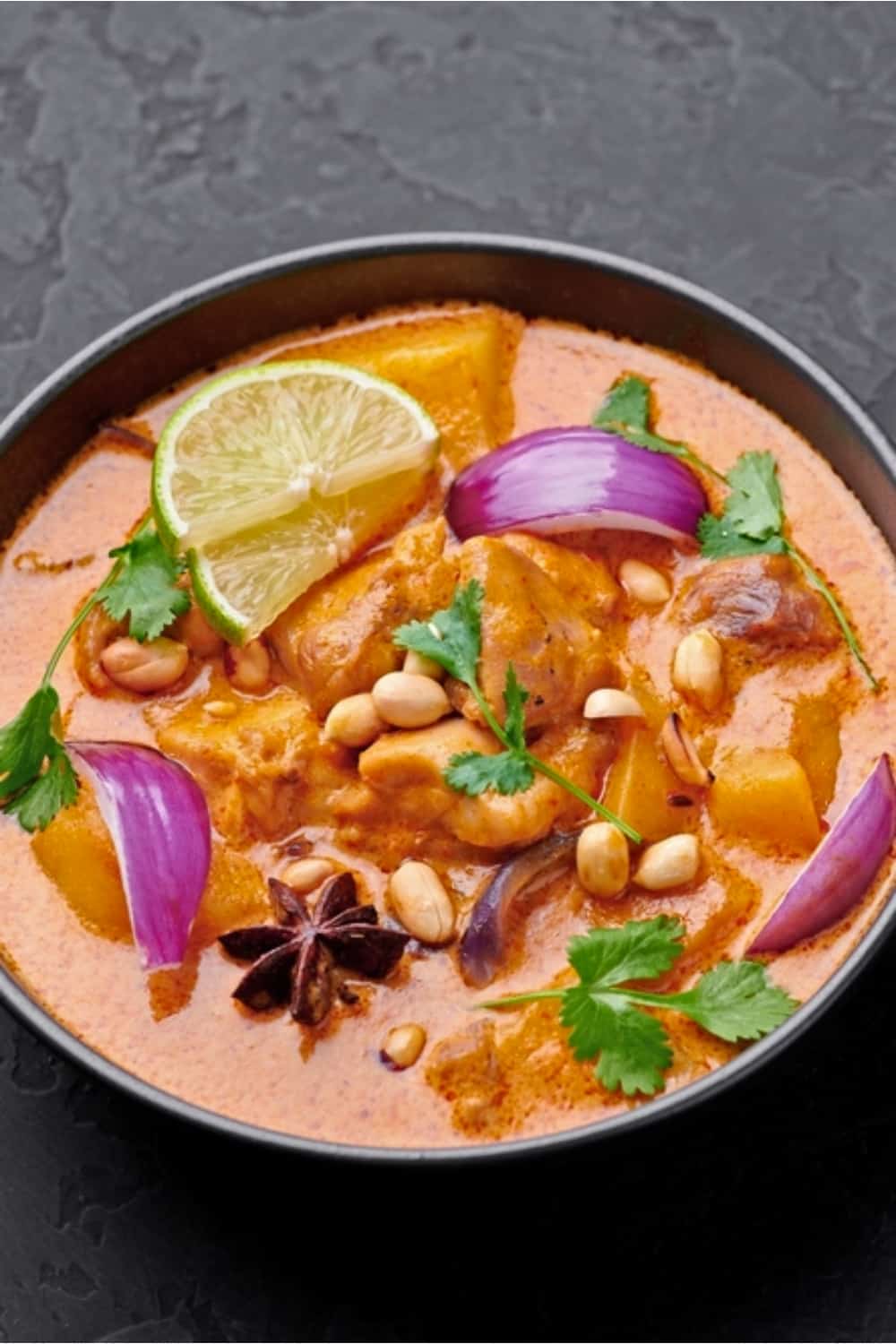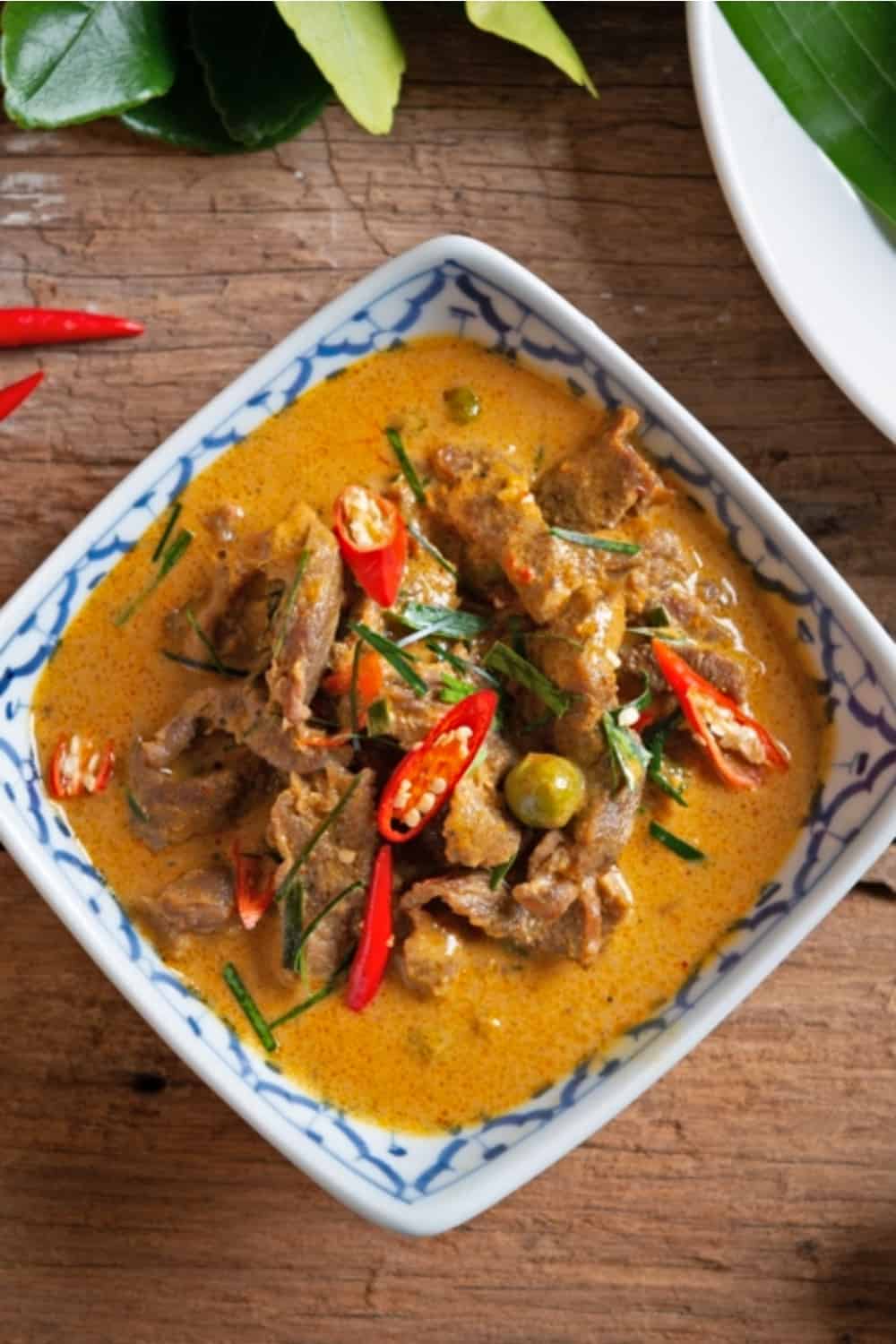Massaman and Panang curries are popular staples in Thai cuisine. Most theories contend that Massaman curry originated in southern Thailand with Persian and Malay influences, while Panang curry originated in central Thailand.
These distinct origins contribute to the unique flavor combinations that have made both curries beloved worldwide!
Now, the key difference between these two Thai curries lies in their flavor. Massaman curry is a mild, slightly sweet, and nutty curry, whereas Panang curry is a bit bolder, creamier, and aromatic.
Besides flavor, there are many other differences between these two types of curries that you’ll find explained in detail below!
NOTE: The word ‘curry’ can be used to refer to both ‘curry paste’ and the actual ‘curry’ dish made with the curry paste. When discussing Massaman and Panang curry, this term applies to both the paste and the dish prepared using the paste.
Massaman Curry Vs Panang Curry: 6 Differences

From the ingredients to pairings and serving suggestions, here are the main differences between Massaman curry and Panang curry:
1. Ingredients
The ingredients of Massaman curry and Panang curry can be divided into three main categories: curry paste ingredients, protein and vegetable options, and other key ingredients.
Curry paste ingredients
• Massaman curry: Dried Thai chilies, coriander seeds, cumin seeds, cardamom pods, cloves, cinnamon sticks, and whole peppercorn.
• Panang curry: Dried red chilies, coriander seeds, cumin seeds, white peppercorns, lemongrass, galangal, garlic, shallots, makrut lime zest, shrimp paste, and occasionally roasted peanuts or peanut butter.
Meat and vegetable options
• Massaman curry: Commonly used meat includes chicken, beef, or lamb, while vegetarian options may feature tofu or seitan. Vegetables often include potatoes, onions, and sometimes carrots or bell peppers.
• Panang curry: Chicken, beef, or pork are commonly used meats with Panang curry, while vegetarian options can include tofu or tempeh. Vegetables, though minimal in Panang curry, may include green beans, bell peppers, or baby corn.
Other key ingredients
• Massaman curry: Coconut milk, fish sauce or soy sauce, palm sugar or brown sugar, and roasted peanuts or cashews for added texture and flavor.
• Panang curry: Coconut milk, fish sauce or soy sauce (for a vegetarian version), palm sugar or brown sugar, and finely sliced kaffir lime leaves for garnish.
2. Color
Both curries derive their color from the use of a variety of spices and herbs, including cumin, coriander, turmeric, and chili peppers, as well as the addition of coconut milk.
Generally, Massaman curry has a rich yellow color, while Panang curry has a lighter shade of reddish color.
Keep in mind that the specific color of the curry may vary depending on the ingredients and proportions used in the recipe.
3. Flavor

Massaman curry is a mild to moderately spicy Thai curry known for its sweetness and complex, rich flavor. It combines warm spices, sweetness, and creaminess from the flavor profile of coconut milk.
Panang curry is a spicier Thai curry that is also known for its sweetness and bold, complex flavor. It combines spicy, sweet, and savory flavors.
4. Texture and consistency
Massaman curry has a thick and creamy texture due to the use of coconut milk.
Panang curry has a slightly thicker and creamier texture because it’s prepared with more coconut milk or cream. Also, it sometimes includes peanuts or peanut butter, which can add a slightly gritty texture.
5. Pairings and serving
Here are the traditional accompaniments of Massaman and Panang curry including the modern twists of these two dishes:
Traditional accompaniments
• Massaman curry: Massaman curry is traditionally served with jasmine rice or roti bread. Some traditional Thai condiments like pickled mustard greens, sliced cucumbers, and lime wedges can be served on the side to help balance the richness and sweetness of the curry.
• Panang curry: Panang curry is traditionally served with jasmine rice or sticky rice. Sliced red chili peppers, kaffir lime leaves, and Thai basil can be served on the side to enhance the flavor of the curry.
Modern twists
• Massaman curry: Some modern twists on serving Massaman curry include pairing it with quinoa or cauliflower rice for a healthier option. Other modern twists include topping it with chopped peanuts, crispy fried shallots, or fresh herbs like cilantro or Thai basil for added flavor and texture.
• Panang curry: Panang curry is sometimes served as a sauce for noodles or as a filling for tacos or wraps. It can also be topped with roasted peanuts, crispy fried shallots, or fresh herbs like cilantro or mint for added texture and flavor. For a healthier option, it can be paired with quinoa or brown rice instead of jasmine rice.
6. Historical context
Massaman curry dish has Malay influences and many origin theories. Here’s one of my favorites:
It is believed that this dish was introduced to Thailand in the 17th century by traveling Persian merchants who were responsible for making Massaman curry popular among royalty.
Panang curry has its origins in the central region of Thailand in 1890. The name Panang means cross in Thai and it’s related to sitting on the floor crossed-legged.
See also: Panang Curry Vs. Red Curry: Are They Any Different?
Massaman Curry Vs Panang Curry: The Final Verdict

Massaman curry, has a milder, slightly sweet, and nutty flavor profile. Panang curry is generally richer and slightly spicier than Massaman curry. Also, this curry has a thicker consistency.
Both curries have their distinct characteristics and can be equally enjoyable. If you prefer a milder, nuttier flavor with an exotic blend of spices, you might lean towards Massaman curry.
However, if you enjoy a richer, more robust Thai flavor with a bit of heat, Panang curry might be your preference.
Ultimately, it comes down to personal taste, and the best way to decide which curry is better for you is to try both and see which one appeals more to your palate. 😄
My Personal Experience
Each curry showcases the diverse and complex flavors of Thai cuisine. I’ve tried both and my personal favorite is Massaman curry because it has a mild and slightly sweet flavor.
Still, from time to time I also enjoy the bolder and creamier version of Panang curry. I guess Thai curries are my weakness, so I’m bound to have more favorites than just one. 😂
Which one is your favorite?

